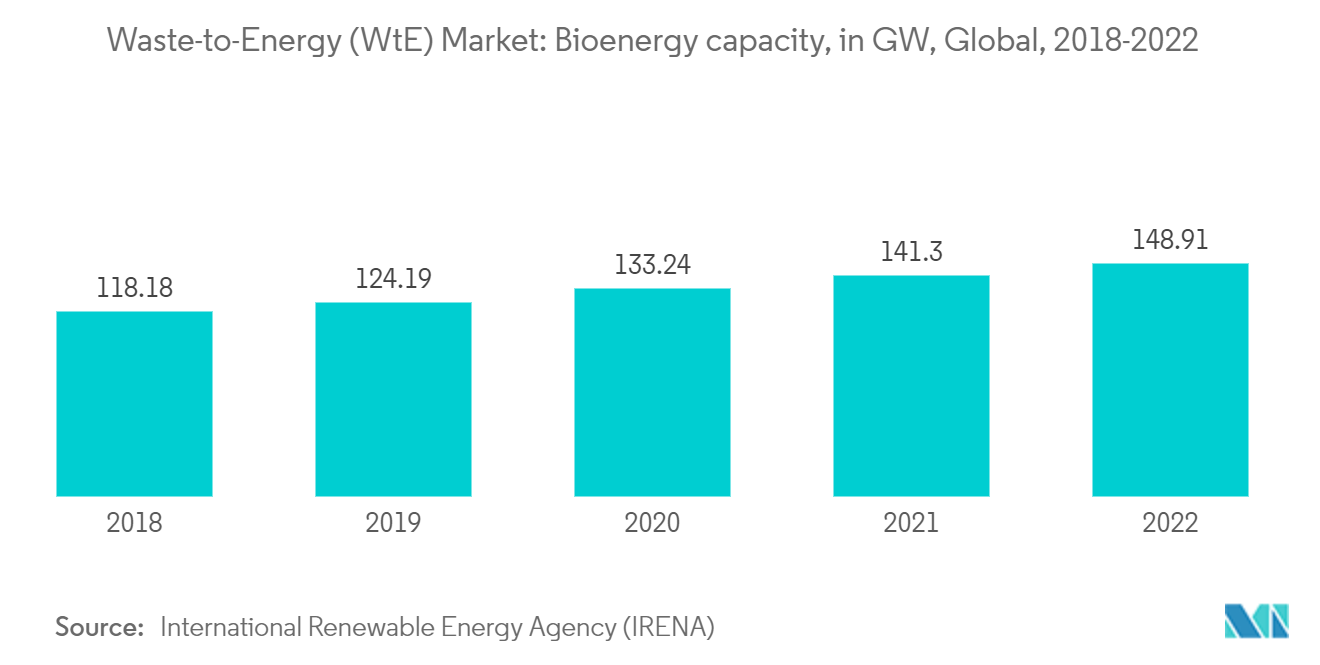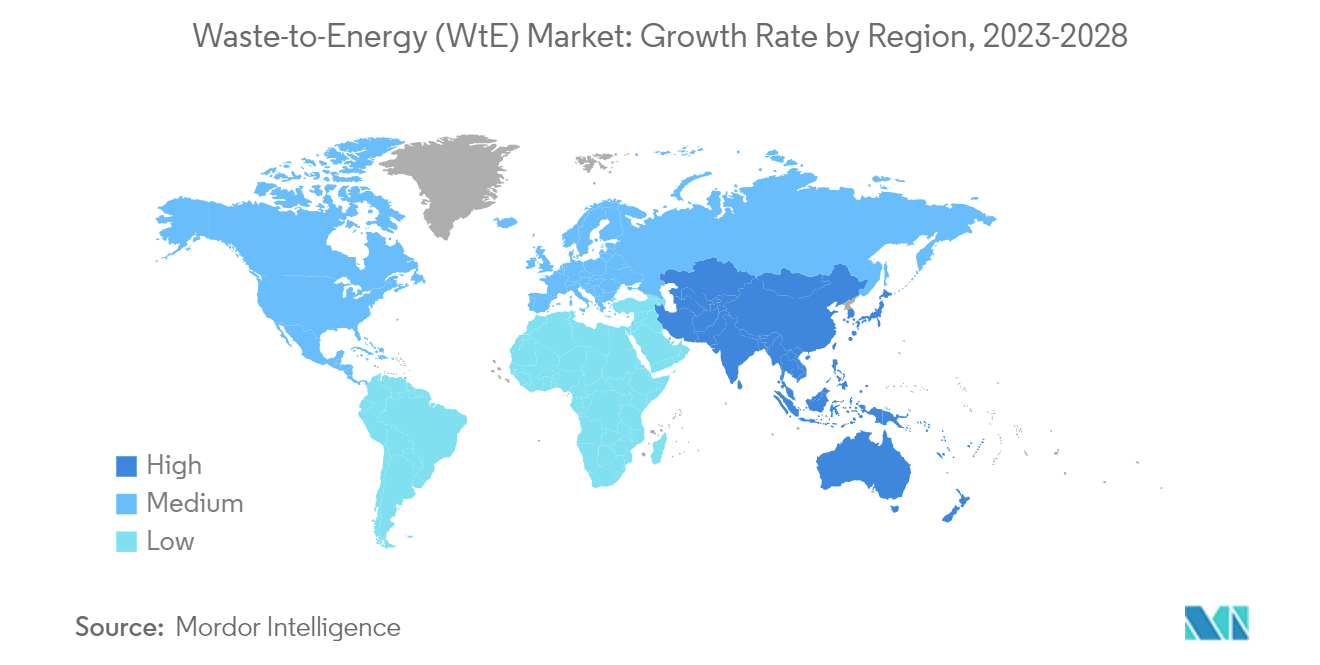Market Trends of Waste-to-Energy (WtE) Industry
Thermal-based Waste-to-Energy Segment to Dominate the Market
- Thermal technology is expected to account for the highest market share in the waste-to-energy market during the forecast period, owing to the increasing development of waste incineration facilities across the world.
- It is estimated that plants that utilize thermal power cogeneration (heating and cooling) and electricity generation can reach optimum efficiencies of 80%. According to the International Renewable Energy Agency, the global bioenergy capacity accounted for 148.9 GW in 2022, with an annual growth rate of 5.3% compared to the previous year.
- In the present scenario, incineration is the most well-known waste-to-energy technology for municipal solid waste (MSW) processing. However, waste-to-energy technologies, particularly incineration, produce pollution and carry potential health safety risks. To reduce particulate and gas-phase emissions, incineration plant owners have adopted a series of process units for cleaning the flue gas stream, which has, in turn, led to a significant improvement in environmental sustainability.
- In February 2022, Solvay and Veolia began constructing a cogeneration unit to provide renewable energy for France's Dombasle-sur-Meurthe soda ash production plant by replacing coal with refuse-derived fuel (RDF). The project entails replacing three coal-fired boilers with a boiler room outfitted with two furnaces that run on RDF, made of previously stored non-hazardous waste.
- The thermal-based waste-to-energy conversion is expected to lead the market, especially in Asia-Pacific's growing economies, where the rising urban population is projected to be the key contributing factor to increasing municipal solid waste (MSW).

Asia-Pacific to Dominate the Market
- Asia-Pacific witnessed significant development in the waste-to-energy industry in the past few years. It has dominated the market across the world with increasing efforts taken by the government to adopt better municipal solid waste (MSW) management practices, providing incentives for waste-to-energy projects in the form of capital subsidies and feed-in tariffs and financial support for R&D projects on a cost-sharing basis.
- Due to economic development and rapid urbanization in China, the generation of municipal solid waste (MSW) has increased rapidly. Therefore, the effective disposal of municipal solid waste has become a serious environmental challenge in China.
- In December 2022, the Minister of Urban Local Bodies (ULB) inaugurated work on the country's largest waste-to-energy (WTE) plant in Gurugram. Ecogreen Energy, a waste management concessionaire, plans to build a 25-MW waste-to-energy facility on 10 acres of property in Bandhwadi.
- Japan has been one of the leading markets for waste-to-energy in Asia-Pacific. The country's waste-to-energy market is driven by efficient solid waste management and financial support for waste-to-energy projects from both national and local governments. The country is expected to introduce waste management and recycling technologies to preserve the enviroment, effectively turning waste into resources or appropriately disposing of it.
- Therefore, factors such as the increasing amount of waste generated and the efforts taken by various governments to tackle this situation are expected to boost the demand for waste-to-energy plants in Asia-Pacific during the forecast period.

